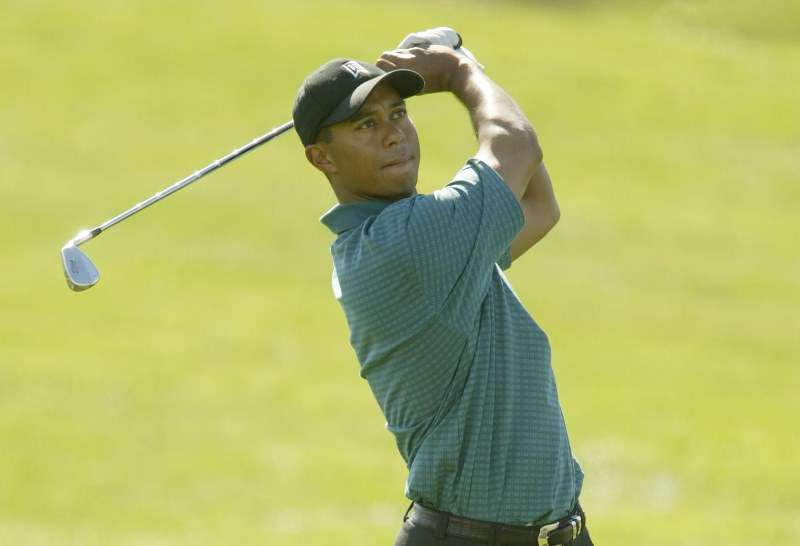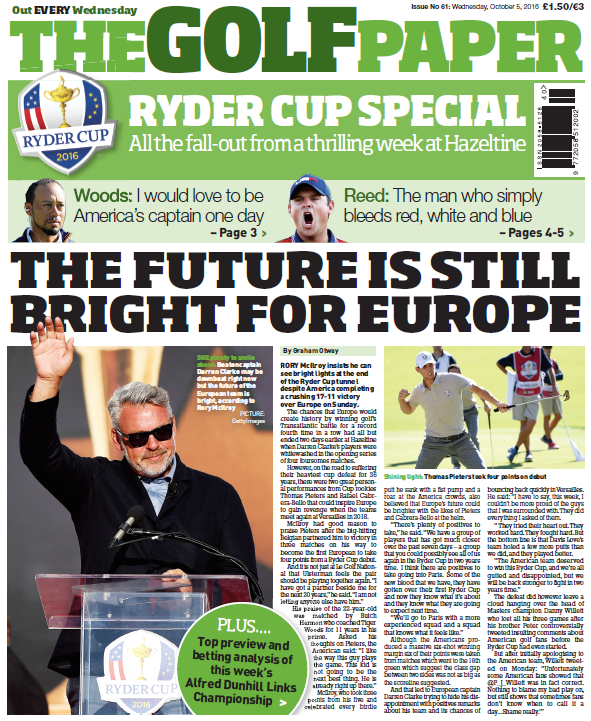Featured
The Aussie who beat Monty, Faldo and Langer at Gleneagles

Second-best: Colin Montgomerie had to settle for a runner-up finish in his home tournament (photo by Getty Images)
By John Huggan
Even now, almost a quarter of a century on, it stands out as perhaps the most amazing 90 minutes of golf ever played on the European Tour. Seven under par for the last five holes of the 1992 Scottish Open at Gleneagles – eagle, birdie, birdie, birdie, eagle – Peter O’Malley emerged from nowhere to claim the title and the £100,000 first prize. Adding to the drama was the quality of the contenders that the then 27-year-old Australian left in the King’s Course dust. Colin Montgomerie was second. Nick Faldo, who would become Open champion one week later, tied for third. And two more Major winners – Ian Woosnam and Bernhard Langer – were in the top ten.
“The numbers speak for themselves,” says New Zealander Greg Turner, a close friend of the Aussie ironically known to all as ‘Pom’. “But for me the most impressive part of it all is whom he beat. That was special for a young guy who had only been on tour a relatively short time.”
O’Malley would go on to other big things. Two more European Tour victories came his way – the 1995 Benson & Hedges International and the 2001 English Open – as well as a host of wins at home in Oz. And, a decade after Gleneagles, he would defeat a lad by the name of Tiger Woods in the opening round of the World Match Play Championship in California.
But on the European Tour, where he played so much of his golf, O’Malley was best known for an amiable personality and for the metronomic quality of his game tee to green. Perhaps no one in the history of the game has missed more ten-foot birdie putts. Sadly for the New South Welshman, his work with the shortest club in his bag has seldom matched his prowess with the other 13.
It is, in fact, no exaggeration to claim that none of his contemporaries on tour hit more solid shots than O’Malley. Not Faldo. Not Lee Westwood. Not Luke Donald. Not Bernhard Langer. When it comes to finding the middle of the clubface and, in turn, fairways and greens, O’Malley had no peer. For all of which he deserved better.
“Modern golf and equipment, some would say with a degree of regret, has moved in a direction that has done Pom no favours,” says Turner. “The two weakest areas of his game would be length and putting, and today’s game (especially on the raft of mediocre courses played on Tour) revolves increasingly around these two facets.”
Still, at least for one brief moment in time, O’Malley’s putter was kissed by the golfing Gods. That seven-under-par run was highlighted by balls going in from seemingly everywhere. In all, he holed 85 feet of putts on those five greens.

Champion form: O’Malley picked up seven shots in the final five holes at Gleneagles (photo by Getty Images)
“I can’t remember what I was thinking standing on the 14th tee, but I’m sure it would have been something related to winning one of the five spots available in the Open,” says O’Malley, who two weeks ago was named as the new chairman of the Australasian PGA.
“There was a bit of a delay. I hit a good drive on to the green and Faldo was in a bunker. I got a break when he came out to maybe a foot outside me on the same line. He hit a great putt but it broke a huge amount in the last couple of feet. So I got a great read. I’m sure I wouldn’t have holed my putt had it not been for Nick showing me the line. I can still remember the roar when it went in. The noise was incredible. I was shaking.
“The drive at 15 was the worst shot I hit all day. But I hit it far enough right that I was on the spectator’s walkway. That was a big break. But it wasn’t until I made two at the 16th that I thought I could win. Although I was really pumped up, that was the first time I had felt adrenaline and been able to control it. The drive on 18 was awkward for me. But I flew it right over the hill. Faldo couldn’t do it. He wasn’t that long off the tee for such a big man. I then hit a six-iron to the back edge of the green. I struck the putt a little too hard, but it hit the back of the hole, jumped up and went in.”
The celebrations went on long into the Perthshire night. And after O’Malley checked into the North Berwick B&B that was his home for the week of the Open at Muirfield, his entry into a local hostelry was greeted by a standing ovation.
“When we went to that local pub for something to eat, everyone in there knew me,” he says with a smile. “I’ll never forget that. It really brought it home to me what a big deal golf is in Scotland.
“But what happened that day will be in the first paragraph of my obituary. It gets mentioned almost every time someone writes about me. It was something I’m not sure anyone else has ever done to quite that extent. It hit me the next day. In the moment, I was just hitting shots. But people forget that I won by two shots. I didn’t have to hole that putt at the last.”
O’Malley’s other big moment in a distinguished career that he admits is “a bit short of victories” was that win over Woods. Ranked 64 in the world at the time, Pom automatically drew the number one, something that strangely did not worry him at all.
“I’d been playing well before that event,” he recalls. “I did well in the Heineken Classic at Royal Melbourne, finishing second behind Ernie Els. That was one of my very best ball-striking weeks. Two rounds stand out. I was pretty much landing the ball where I wanted to. That’s so important at Royal Melbourne. And during those two rounds I had uphill putts on 32 of the 36 holes. So I went to La Costa feeling good about my game. OK, I had no expectations of winning. But I’d played with Tiger in New Zealand only a few weeks before and had no pressure on me.”
That lack of expectation translated into a 2&1 victory in which, to quote one eyewitness, “Tiger putted like Pom and Pom putted like Tiger!”

Knocked out: Tiger Woods was beaten by O’Malley in the first round of the WGC-Matchplay (photo by Getty Images)
“Tiger just had a bad day on the greens,” says O’Malley. “But he was pretty relaxed about it all. Through 15 holes he hadn’t made a birdie. And when I made one on the 15th I was three up. I was only two or three under par too. But a different Tiger walked to the 16th tee. I could see it in him. He smashed a huge drive and hit his approach to maybe 20 feet. The putt never looked like missing. I was lucky in that the 17th was a par-five even he couldn’t reach. I hit driver, 3-wood into the lay-up area about 100 yards short. He hit driver, five-iron. Then he hit a wedge to inside three feet. I hit to 20 feet and rolled in the putt to win. So that was nice. Of course, I played a lot better the next day and lost to Nick Price.”
As ever, O’Malley’s accounts of even his best days on the links are laced with his inherent modesty. “I’m all right with what I’ve achieved,” he says. “The one big disappointment I have is that I never got to play in the Masters. I spent a long time between 60 and 75 on the world rankings. But I never cracked the top 50.”
So not much upsets him. But (as mentioned in these pages in the wake of the recent US Open) there was one time when he didn’t hold back. Perhaps provoked by the unanswerable truth that those with O’Malley’s attributes have been marginalised by the equipment changes over the last two decades, he cites the 2002 US Open at Bethpage Black as a course where he had no chance to make the cut, never mind win the tournament.
“I was first off the tenth tee on the Thursday,” he says. “But I couldn’t reach the fairway. I wasn’t alone and it was the same at the 12th. I wasn’t so much angry as perplexed at how stupid it all was.
“I remember [former USPGA champion] Wayne Grady asking a USGA official if they were going to move the tees forward. I’ll never forget his reply: ‘Where in the rulebook does it say you have to be able to reach the fairway?’ I didn’t say this to the guy, but I said it to Wayne: ‘Where in the rulebook does it say you have to have a brain to be a USGA rules official?’ ”
One of golf’s eternal questions.





